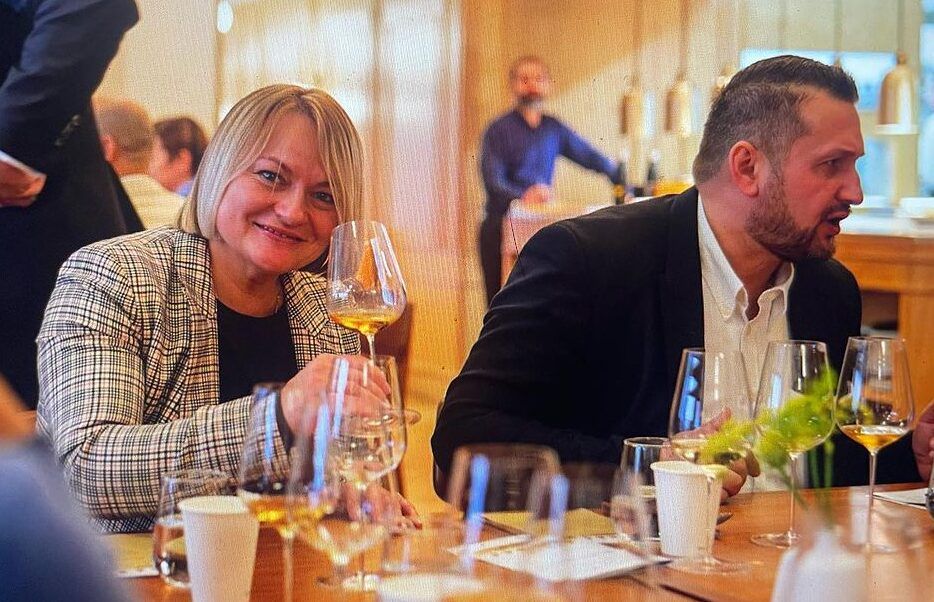“Sweet Tokaj is a global reference for elegant balance, drinkability and living acidity. It needs to come out of its hiding place in the box marked ‘dessert wine’ and show that it’s a joy with other cuisines, including spicy Asian flavours,” says Dr Péter Molnár.
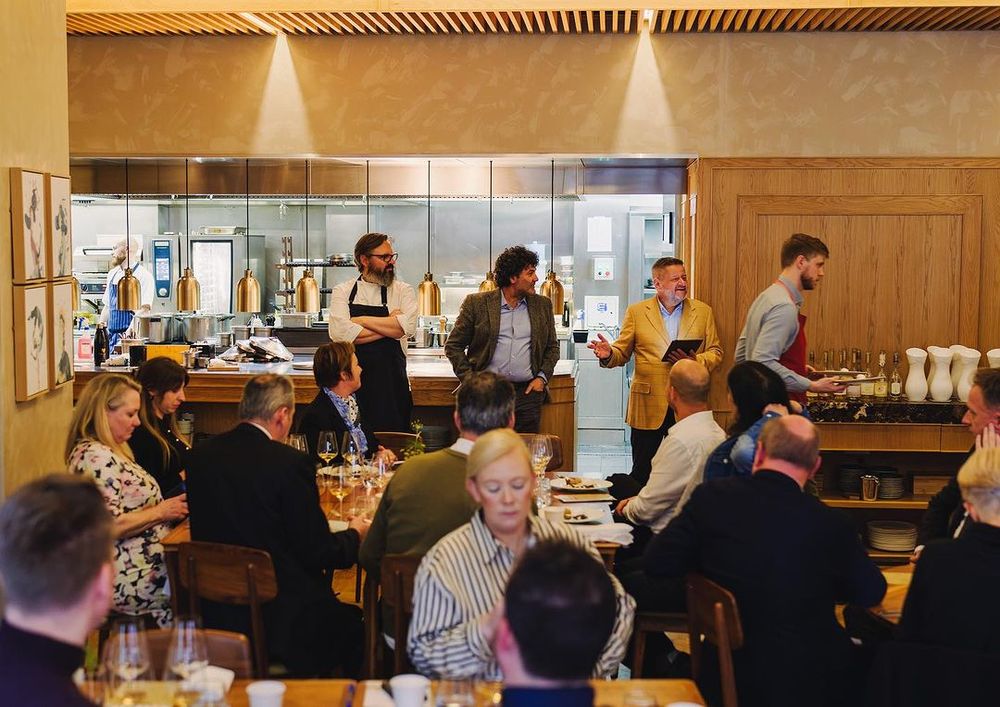
Sweet Tokaj tasting and lunch, Trivet, November 8, 2023. Celebrating the exquisite sweet wines of Tokaj, Isa Bal MS and chef Jonny Lake created an outstanding menu
The ‘Sweet Tokaj Campaign United Kingdom 2023,’ which was launched this autumn, was formulated jointly by Wines of Hungary UK and the Hungarian Wine Marketing Agency. Some heavyweight ballast was provided by the Hungarian ambassador in London, Dr Ferenc Kumin, who spoke at a promotional lunch for the region at Michelin-starred London Bridge restaurant, Trivet, in early November.
Although no winemakers were present, the sweet wines of ten of Tokaj’s top producers were on parade along with the Royal Tokaji Wine Company’s managing director, Charlie Mount. The engaging Old Etonian revealed the 2023 vintage was a very good one, and addressed the issue of sweet wine demand with positivity despite its gradual decline in sales over recent years.
“Yes sweet wine sales as a whole are shrinking in the US, the UK and markets everywhere, but we don’t look at it too much as we’re such a tiny part of that market,” Mount told The Buyer. “If we were 80% of the fine sweet wine market, and it was shrinking by 20%, we’d be terrified. But, in the UK and elsewhere, we have consistently been able to grow our sales in a shrinking market because we offer something so unique.”
Mount was referring, in particular, to his winery’s legendary Tokaji Eszencia, the 2016 version of which was recently released. Notwithstanding a price tag of £490 per bottle in-bond at Farr Vintners, he revealed “it has been flying out the door, leading to a spike in fine wine sales.”
If that is a niche product with superstar status, Mount pointed to some encouraging general trends.
“If you look at what is termed ‘sweet wine consumption’ in most market research,” he continued, “it is growing massively in the US, and it’s starting to grow in the UK, although it’s driven by low level wines – a lot of Moscato for example. But the thought is that potentially those consumers with an undeniably sweet tooth may trade up in the future. So there are reasons to be positive.
“The category as a whole in the US is growing faster than Rosé – at the $10 level rather than $55 a bottle though. The US is very much a state-by-state picture – certainly in Florida, Texas and New York, sales have boomed. Overall, we’re very positive in the US, and here in the UK, off-trade sales have been very resilient, going well at Waitrose and Majestic for instance.”
Royal Tokaji exports to as many as 41 countries, with the once fastest-growing markets of China, South Korea and Taiwan now relegated to slowest growth status. It is to the UK, however, that Wines of Hungary UK’s head, Zsuzsa Toronyi, is looking for sweet wine growth even though Britain is already the number one market for all Hungarian fine wine.
“Sweet Tokaji wines are the best known wines from Hungary, but they’re not yet in the place they should be in the international market,” she declared. “We’d like every consumer to have a bottle of it in their wine fridge. You can open a bottle of Tokaj and it will keep for months. It goes well with all food – ham, fish, meat, cheese and desserts. It can be a special dining experience with your family. So we are targeting the on and off-trade equally, and need sommeliers to be our ambassadors.”
The message was eloquently reinforced by Dr Péter Molnár, owner of the Patricius estate and president of the wine council of Tokaj.
“Tokaji Aszú is much more than a sweet wine,” he said. “It is a global reference for elegant balance, drinkability and living acidity. It needs to come out of its hiding place in the box marked ‘dessert wine’ and show that it’s a joy with other cuisines, including spicy Asian flavours.”
So how were the wines tasting?
There were 30 different examples at the lunch of the two most important sweet styles, namely Tokaji Aszú and Szamorodni:
Aszú (minimum 120g/l residual sugar for 5 puttonyos; 150g/l for 6 puttonyos) is made from botrytised fruit and aged oxidatively in barrel for between 18-36 months in barrel. It must have 35g/l of dry extract, and a kilo of Aszú berries can produce no more than 2.2 litres of wine.
Szamorodni (minimum RS 45g/l but generally 80-120g/l) is also botrytised but barrel-aged for at least six months and is not necessarily aged oxidatively. Dry Szamorodni (max 9g/l RS) is also made.
Apart from the residual sugar levels, the two sweet styles have subtle differences. Szamorodni is characterised by its fullness, richness of flavour, fine tannins and complex, ripe fruit. Aszú wines represent perfect harmony between natural sweetness, freshness and medium to low alcohol. Their wealth of dried fruit, spiciness, oily texture and complexity derived from the long ageing process ensure they stand out from other sweet wines. Above all, they have extraordinary length.
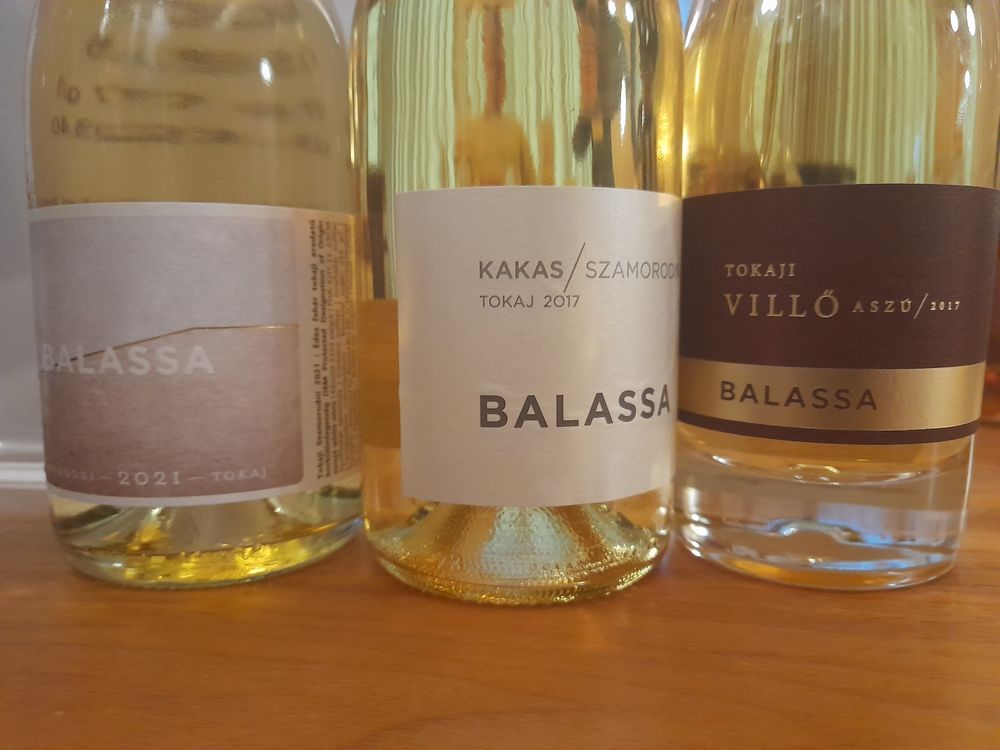
Interestingly, though, the first of half a dozen Szamorodnis tasted, a sumptuous 2021 made from 100% Furmint by Istvan Balassa, came in with a whopping 253g/l of residual sugar (the fermentation having been stopped with the wine only 9% abv). Contrast this with Chateau Dereszla’s 2018 Szamorodni (70% Furmint; 30% Hárslevelű,) which has 130g/l RS and 10.5% abv.
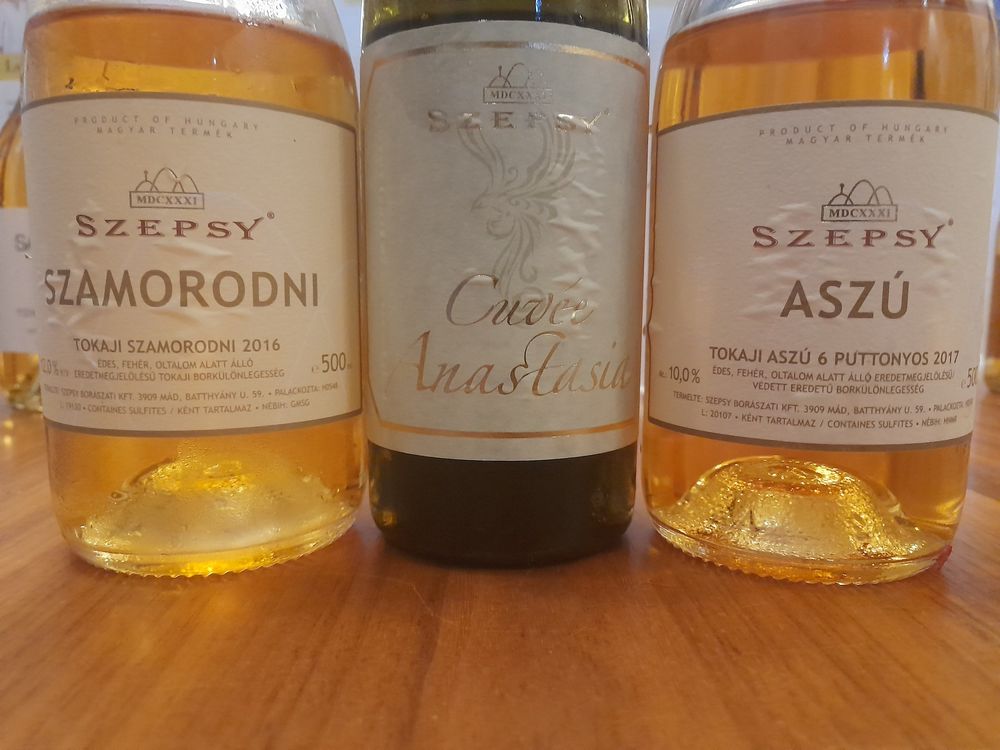
Making up a triumvirate of beguiling Szamorodnis was the Szepsy 2016 (60% Furmint, 20% Hárslevelű, 20% Yellow Muscat; 12% abv, 177 g/l RS). Of all Tokaj’s producers, none is more revered than Istvan Szepsy, who has handed over to his son Istvan junior. Eighteen generations of the family have been making wine since 1631 when Laczkó Máté Szepsy was the first to write down how to make Tokaji Aszú. Their 50-hectare holding of vines, planted on steep slopes on rocky volcanic soils just outside the town of Mád, is considered in some quarters to be the world’s single most complex soil composition. The Szepsy Aszú 2017 (a great vintage in Tokaj) exhibited almost insane concentration and length (260g/l RS, 10% abv), being balanced by 8.5 g/l of total acidity.

The Patricius 6 Puttonyos Aszú 2017 was another magestic wine, being half a degree higher in alcohol but with 48g/l less residual sugar and very similar levels of acidity. Sauska’s very classy Aszú 6 Puttonyos from the same year was higher in both RS (228g/l) and alcohol (11.5%) was very long indeed with massive concentration and intensity.
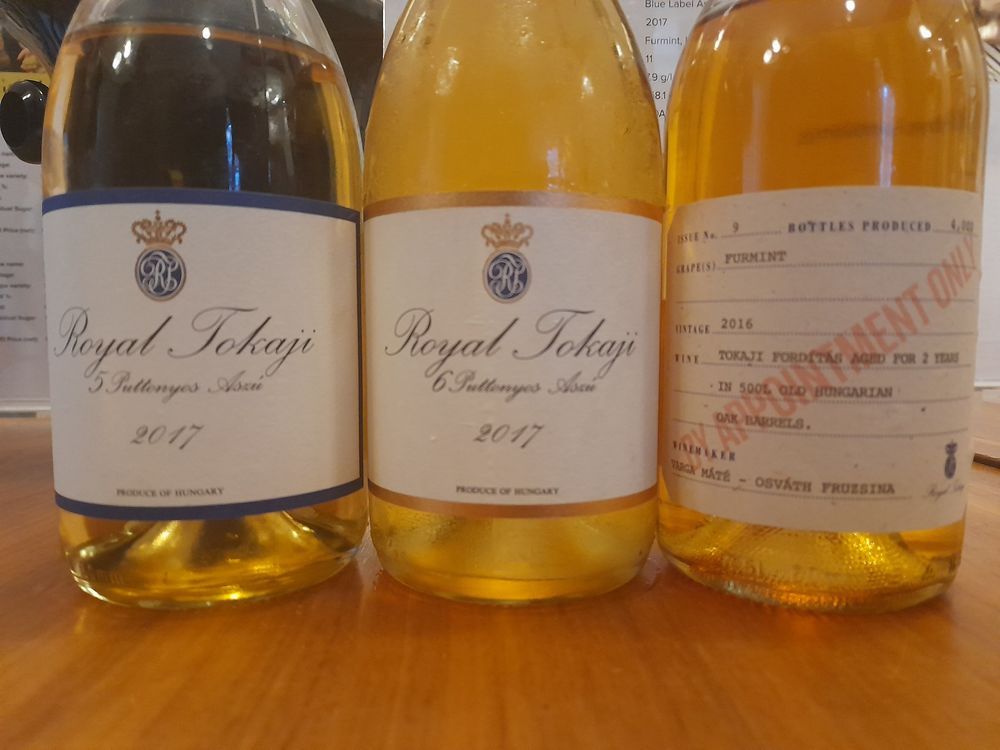
The Royal Tokaji Wine Company is one of the few producers in Tokaj which focuses mainly on Aszú wines.
“The first thing we focus on at harvest is the availability of the Aszú berries,” Mount said. “This year,initially, was quite slow as it was taking a long time to dry out. We were spending a lot of time in our vineyards and hoping to spread the botrytis around. We also buy in about two thirds of our grapes, and it was quite challenging this year to persuade smaller growers to delay harvesting in the hope of getting Aszú berries. So we took the decision very early on to raise what we pay growers by 30%, and luckily that generated their patience to wait and dry the grapes on the vine.”
“There’s a risk you may lose everything but, at the end, we were able to have a very successful harvest: we had the Aszú berries we wanted. We bought in more than everyone else in the region put together, and it’ll be a very good vintage that will come to the market in seven years time.”

The Füleky estate, founded in 1998, shares a similar single vineyard philosophy to Royal Tokaji with 25 hectares under vine in some of the region’s best sites. Its 2007 Tokaji Aszú 6 Puttonyos (203g/l RS, 11% abv) was as beautifully balanced as it was elegant and underlined how well Aszú ages.
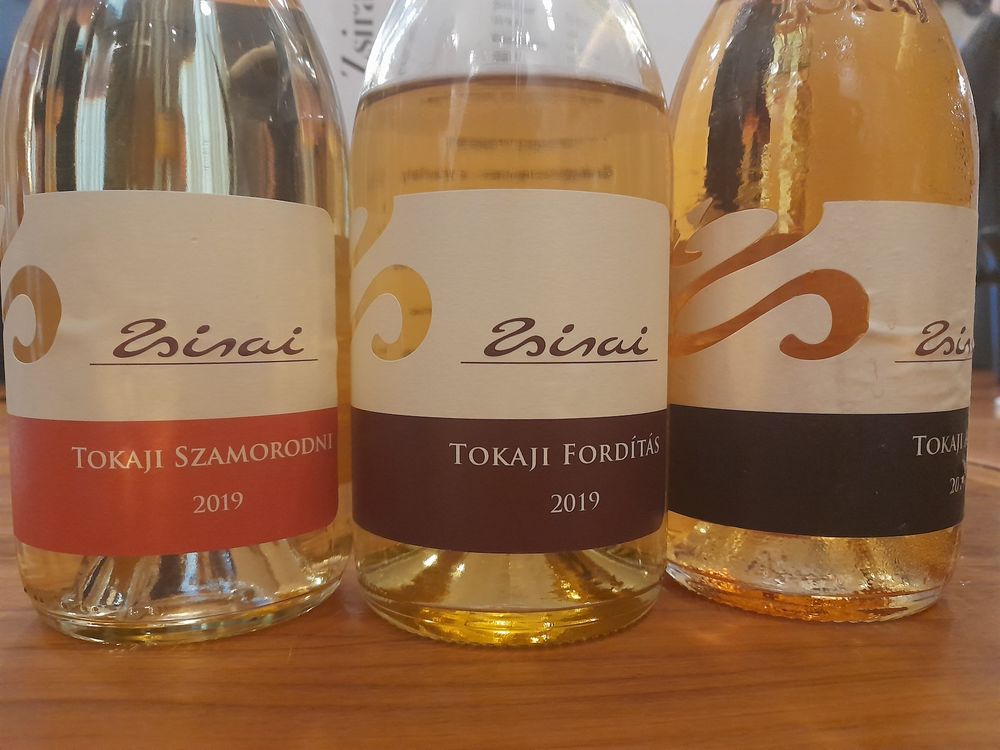
Also hugely impressive were the wines of the Zsirai family, which owns 18 hectares of vines in some of the most renowned first growth vineyards, including Betsek, Középhegy, Szt. Tamás and Úrágya. Kata Zsirai, who was Hungary’s young winemaker of the year in 2018, and her sister Petra have run the estate since the death of their father Csaba in 2011. Their Szamorodni 2019, made from 100% Furmint, was elegant and complex with notable concentration and length (103g/l RS, 13.5% above). By contrast, their Aszú 2019 had 235g/l of residual sugar and 9% abv.
Another extremely capable winemaker, Vivien Ujvari, crafts superb sweet wines for Barta, a 13-hectare estate that is farmed organically. It was founded by Karoly Barta, who started replanting Furmint vines in 2003 in one of Tokaj’s most historic sites, the Öreg Király Dűlő (Old King Vineyard ), that had been abandoned after World War II and ignored through the communist regime. Situated on a steep hillside outside Mád between 320-345 metres on rhyolite and zeolit red clay, the vines produce wines of startling concentration, minerality and freshness.

Founded a year earlier than Barta in 2002 was the Béres winery in Erdőbénye. Its rise has been no less meteoric, with award after award coming its way. In 2015 it was voted Hungary’s most beautiful winery, and in 2020 its 2016 6-puttonyos Aszú was selected as ‘Wine of the Hungarian Parliament.’ That wine featured a dramatic level of total acidity (13.07 g/l) to counter-balance 216 g/l of residual sugar. Super-high TA is a common theme of Béres’ sweet wines, as is formidable concentration. Its 2008 6-puttonyos Aszú (171 g/l RS, TA11.1 g/l, 10.5% abv) was also supremely rich thanks to intensive botrytis in what was a very warm autumn in a 5-star vintage.

While Béres is one of Tokaj’s youngest wineries, Tokaj-Hétszőlő is quite possibly the region’s oldest. In 1502, the Garai family selected the seven best parcels on the south side of Mount Tokaj. ‘Het-Szolo’ means ‘seven parcels of vineyard’ in Hungarian. They were classed as Tokaj premier cru as early as 1772 when the estate still belonged to the Austro-Hungarian Empire. A special microclimate and the loess and volcanic soils, which are farmed organically, yield Furmint grapes that produce wines of great harmony and complexity. The Tokaj Aszú 5 Puttonyos Hétszőlő 1er Cru 2010, from what was an outstanding vintage, was a superb wine to end a memorable tasting.
The wineries and their UK importers
Balassa (Best of Hungary), Barta (Corney & Barrow), Béres Tokaj (Mephisto Wine Merchants), Chateau Dereszla (Armit Wines), Füleky Tokaj (Amathus), Patricius (Enotria), Royal Tokaji (Bibendum), Sauska (Enotria), Szepsy (Top Selection), Tokaj-Hétszőlő (Les Caves), Zsirai (Jascots),
